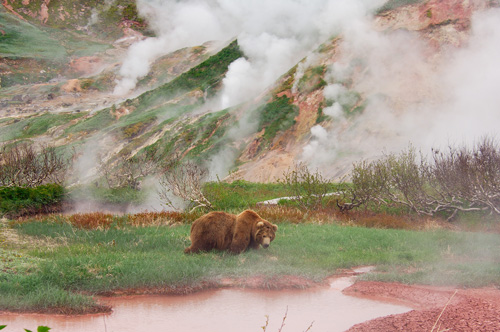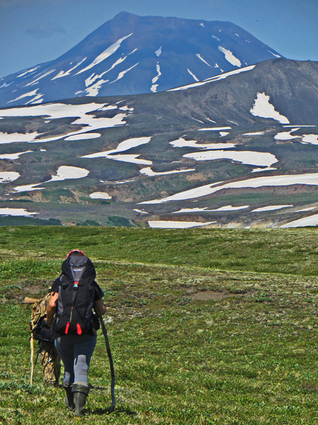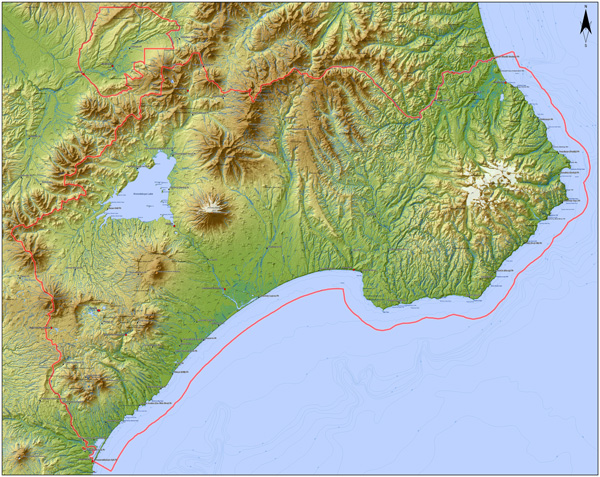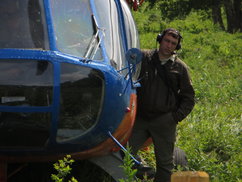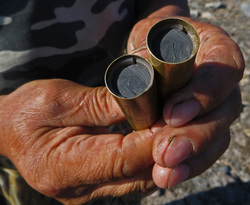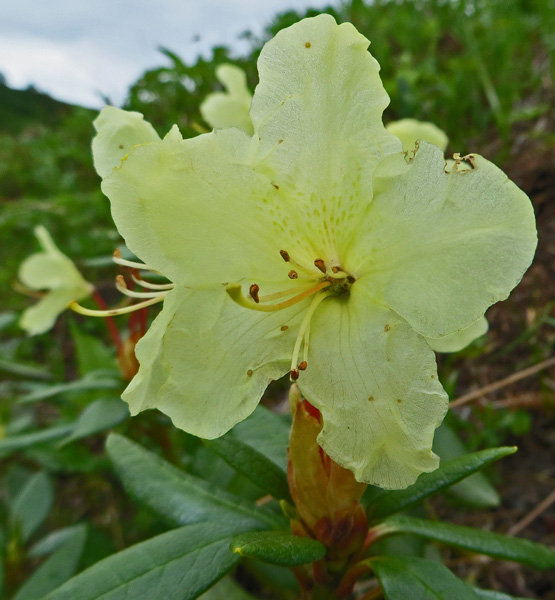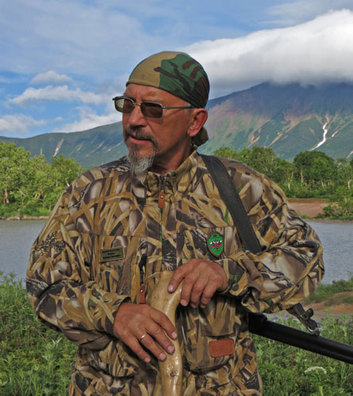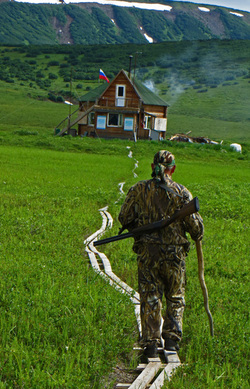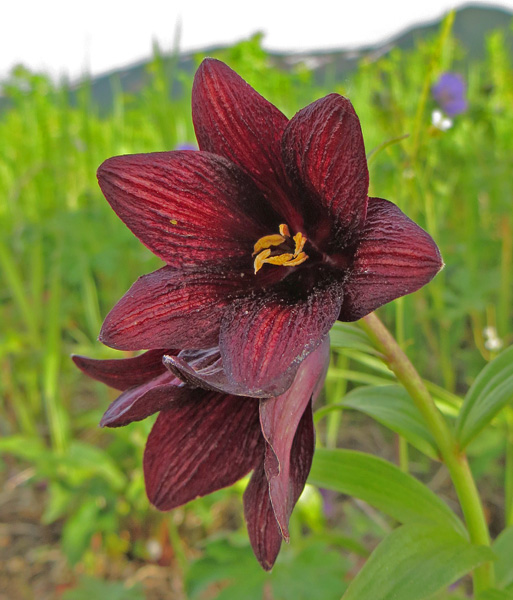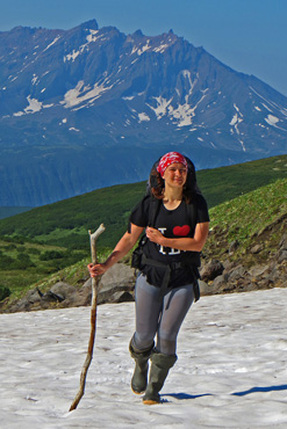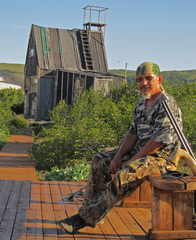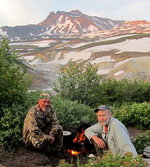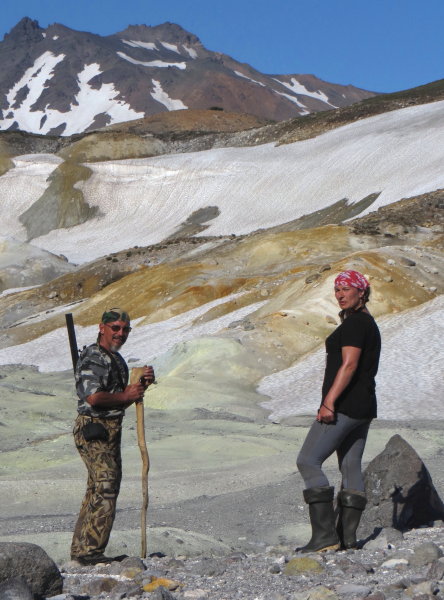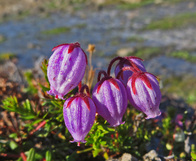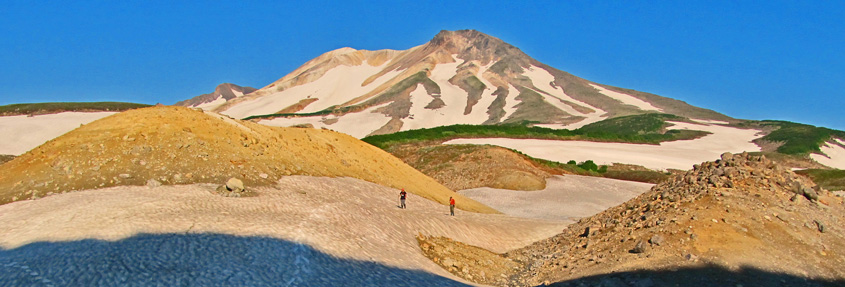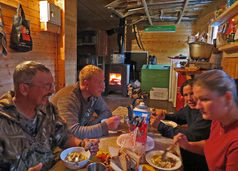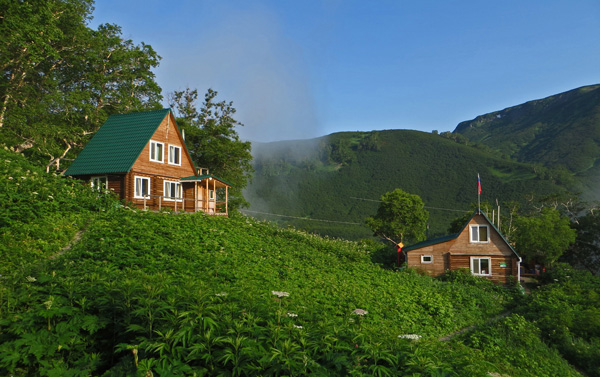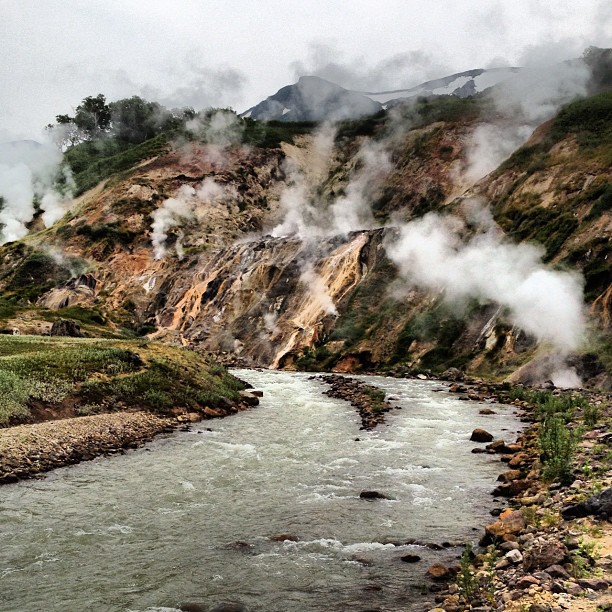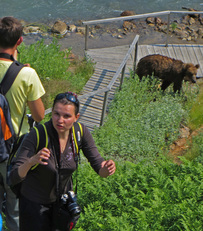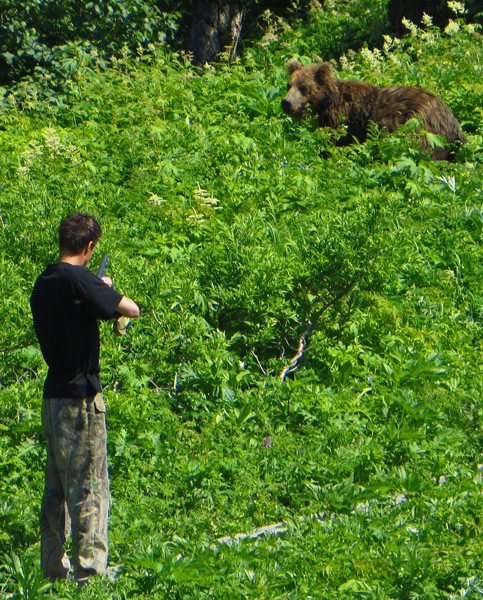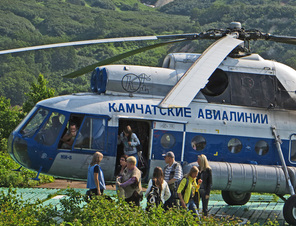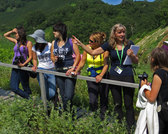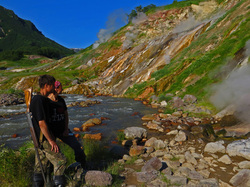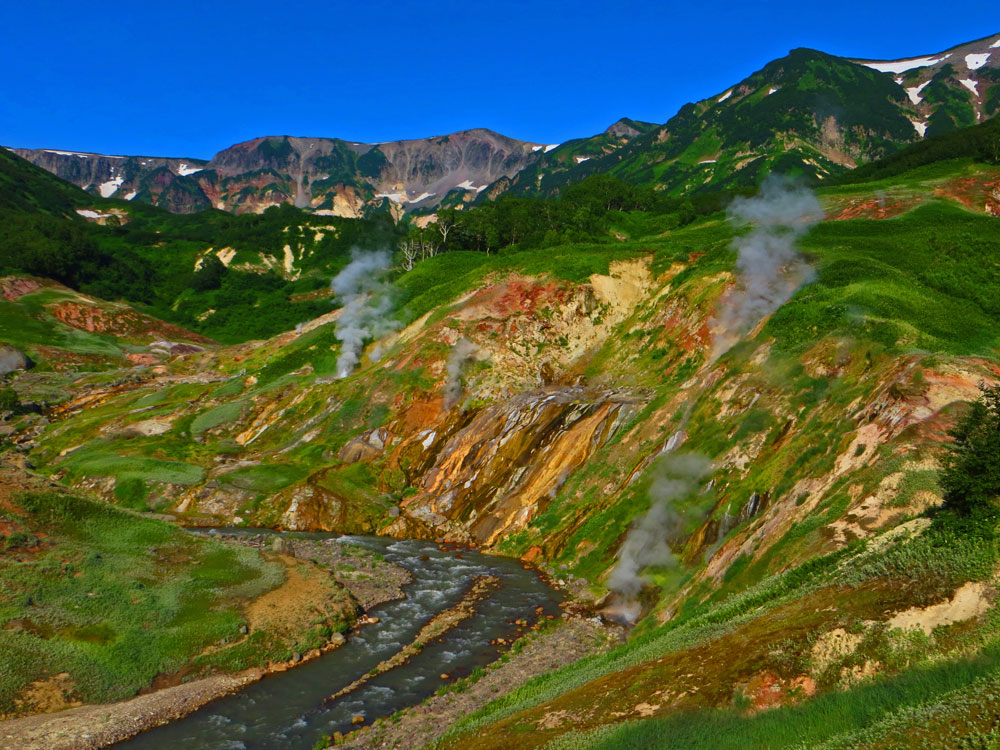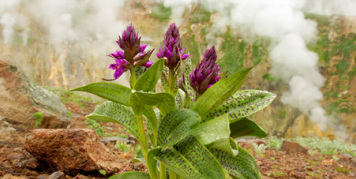Hiking Russia's Geyser Valley--in Kronotsky Zapovednik, Kamchatka, Russia
(For full text at the website of the BBC, including more photos by Igor Shpilenok, see:
<http://www.bbc.com/travel/feature/20140206-hiking-russias-geyser-valley>).
(Originally published in slightly different form in BBC Travel, February 11, 2014.)
by Fred Strebeigh
For more photography by Igor Shpilenok <www.shpilenok.ru/>, the great Russian naturalist-photographer,
see the original BBC article at <http://www.bbc.com/travel/feature/20140206-hiking-russias-geyser-valley>)
Photography on this site is by Igor Shpilenok & Fred Strebeigh & Evgeny Vlasov & Elena Bulatova & Dmitry Medvedev
[This site is in progress as of 4/7/2014; it will hold some photos not on the BBC website.]
Русская версия (Russian version)
by Fred Strebeigh
For more photography by Igor Shpilenok <www.shpilenok.ru/>, the great Russian naturalist-photographer,
see the original BBC article at <http://www.bbc.com/travel/feature/20140206-hiking-russias-geyser-valley>)
Photography on this site is by Igor Shpilenok & Fred Strebeigh & Evgeny Vlasov & Elena Bulatova & Dmitry Medvedev
[This site is in progress as of 4/7/2014; it will hold some photos not on the BBC website.]
Русская версия (Russian version)
|
Now, our small group of trekkers ascended through meadows
gilded with golden rhododendron. We drank from snowfield rills. Spectacular volcanoes
loomed ahead, part of the great arc of volcanic and seismic activity known as
the Pacific Ring of Fire. We were trekking the highlands of Russia's Kronotsky
Zapovednik, diadem of the world's largest system of strictly protected nature
reserves.
And I was one of the first foreigners permitted to go hiking here as a mere tourist. Ever since Russian naturalists started the country's system of zapovedniki (strictly protected nature reserves) in 1916, these vast landscapes have been mostly inaccessible, except to scientists, rangers and students. But now, thanks to government initiatives begun in 2011, many of these reserves are opening to a limited number of travellers. |
|
It is as if the US national park service (also, incidentally, founded in 1916) had forbidden hiking for most of a century – then decided a few travellers deserved a chance to explore the Grand Canyon or get close to Yellowstone’s Old Faithful.
When I heard, I came. Located on Russia’s 1,200km-long Kamchatka peninsula, which swings like a sabre away from Asia and toward the Americas, this nature reserve is closer to California than to Moscow. Although larger than Yellowstone, with more than 10,000sqkm of protected wilderness, Kronotsky for years has permitted only the most constrained of non-scholarly visits: after taking a helicopter flight costing 36,000 rubles, groups of tourists parade on boardwalks in small areas for under three hours. No roads go to Kronotsky. |
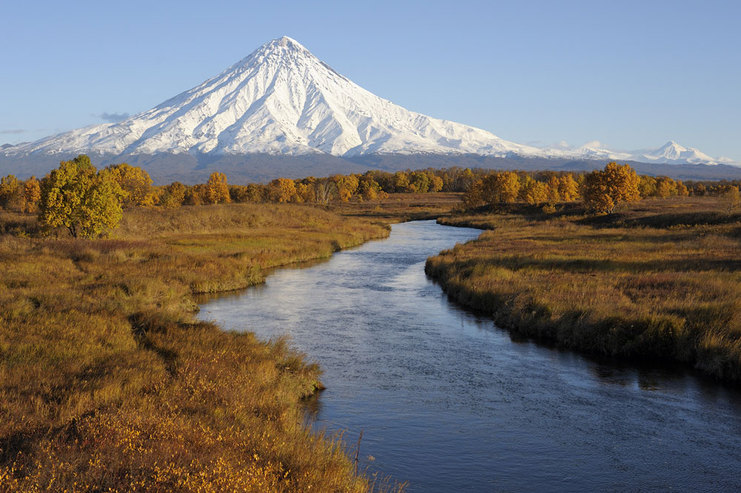 Kronotsky Volcano [Igor Shpilenok]
Kronotsky Volcano [Igor Shpilenok]
Now,
as our group of three reached the mid-point in a five-day hike, snow-crowned
Kronotsky Volcano rose before us, lifting more than 3,500m from the nearby
Pacific. At its base, 30 million landlocked salmon swirled in its lava-dammed
lake, a buffet for hundreds of the world's best-fed (and, weighing up to 700kg,
largest) brown bears. Kamchatka snow
sheep roamed unmolested in the volcano’s heights – a privilege, since foreign
hunters pay handsomely to shoot this long-horned subspecies in unprotected
mountains 150km north of the sanctuary.
|
But
nobody hunts here. The Russian word zapovednik comes from zapoved
(commandment), as in "thou shalt not harm". The reserve's 33-year-old
director, Tikhon Shpilenok, who came here after he worked as an anti-poaching
ranger at another zapovednik, happily cited Russian law that permits only
"educational tourism" in Russia's 102 zapovedniki.
|
|
|
Kronotsky's
great educators are its long-time rangers, who escort trekkers in this
almost-untracked land. My guardian ranger, Evgeny Vlasov, strode ahead of our
small group, making himself visible in order to alert bears. For safety, Vlasov
packed his shotgun shells with handmade rubber bullets – designed to stun but not
harm a bear – that he carved from flexible gaskets, castoffs from a nuclear
submarine base. Until 1991 and the easing of Cold War tension, the Kamchatka
peninsula was so militarised that Russia prohibited all travel here by
foreigners.
I had first met Vlasov 12km west of here, when a helicopter dropped me near his ranger cabin in Uzon Caldera, one of Kronotsky's botanical and geological wonderlands. From our first steps, he started teaching. The roots of the garnet-red Kamchatka lilies were savoured by his ancestors, Itelmen natives living here for millennia before Russians arrived in the late 1600s. And what looked like milk-white morning glories undulating in hot springs actually were swirls of heat-happy bacteria – among the many living "extremophiles" that draw scientists from around the world, probing for clues to early life's evolution. |
|
Vlasov's
polished-wood staff, which he extended often to help me leap across streams,
was whittled from the stone birch trees that abound in the caldera, creating
what looked like white-washed groves for hobbits. (When 1970s Soviet filmmakers
created their version of an escapist journey to a Russian Shangri-La, Sannikov
Land, they filmed here). As my legs began fading in the tenth hour of our first
full day of backpacking – climbing out of one caldera, tracing a tufa-banked
river and then descending into a gorge – the leaves that Vlasov shoved in my
mouth were Itelmen favourites for fixing low testosterone. Or something.
Specifics aside, the uplift got me to our next cabin ahead of darkness and
bears, though Vlasov had to fire his shotgun skyward when he surprised a mother
and two cubs on our trail near nightfall. All three vaulted upslope and away.
|
|
Now
in the highlands with Kronotsky Volcano slipping out of sight, our hiking
destination came into view: a ranger-patrol cabin that Vlasov built in 1985.
Above it hulked a black-crested volcano called Savich. Born in an eruption near
700AD (making it roughly one-tenth the age of Kronotsky) and still fuming,
Savich rides a blob of upwelling magma. Pressing up from about 8km beneath our
feet, the blob drives superheated water through underground channels to create
the Valley of the Geysers’ frothing fountains and bubbling mudpots.
From the ranger-patrol cabin we looked down into another of the magma blob's creations: a diabolic cousin to the green geyser valley, discovered only in 1975 when it received the name Death Valley. On windless days, its gases – laced with hydrogen sulphide and cyanide – settle near ground level and kill. Its victims have included foxes, bears and even yellow-beaked Steller's sea eagles on the rare occasion they stray from the fine fishing along the zapovednik's Pacific shoreline, less than 20km southeast of us. |
|
Today, though, brought blue-sky breeziness with good odds
for safety. Vlasov led us down slope, across sands of sulphur green and chrome
yellow, into Kamchatka's vivid vale of death. We reached a lone set of human
boot prints. I thought of Robinson Crusoe. "Slava", said Vlasov,
speaking of a ranger who walked here from the geyser valley on routine patrol.
Beside a stream flowing over olive-green cobbles, Vlasov zipped to the top of a peaked boulder, raising his birch staff in mock-alpinist triumph. I bent low to photograph the olive stream – a mistake. My head reeled. Wooziness, rangers say, signals the onset of deadliness. Vlasov, however, was already leading us out of our toxic gorge. "I survived Russia's Death Valley" stuck briefly as a bumper-sticker on my mind. Stretching out on a ridge to enjoy the breezes blowing through bellflowers and heathers, we gazed at the well-defended wilderness surrounding us. Protecting Russia's wilds For decades Russia's system of zapovedniki has provided the world's highest level of nature preservation (called category 1a by the International Union for the Conservation of Nature) to the largest land area within one nation. Nature protection for zapovedniki is stricter than for the world's national parks, some of which, like Yellowstone, have paved hundreds of kilometers of roads and permitted development of grand hotels within their boundaries. |
|
To Vlasov, Russia’s history of nature protection began long before 1916. As we dined on ranger-concocted potato soup and fish paste bruschetta, he reminded us that his Itelmen ancestors reputedly had begun preserving off-limits forests and no-hunting regions before the first Russians came here in the 1600s.
Today, the zapovednik system is a source of Russian pride. Just five days before my arrival in July 2012, Russian Prime Minister Dmitry Medvedev had helicoptered into the geyser valley and then shared some photos of his trip on Facebook. He got more than 3,800 "likes" for a misty snap of an iconic array of geysers, rising up a multi-toned valley wall known as "Stained Glass", tinted with reds, yellows, greens and blues by a mix of soils and plants. Medvedev's geyser junket followed a 2010 visit of then prime-minister and now president Vladimir Putin. Each leader, after visiting, announced support for expanding the zapovednik system by 11 new reserves from 2010 to 2020. Prime Minister Medvedev did not stay overnight; most visitors cannot. Although Kronotsky is opening to a few hikers, its scientists have set limits on how many walkers may travel a route, in order to assure that soils remain undamaged and animals unharried. |
Kronotsky's typical tourist, often dressed in Moscow-style street clothes, steps off a helicopter for about two hours of walking on boardwalks built by Vlasov and his ranger colleagues to protect both fragile plants and feet vulnerable to steam-searing on magma-heated earth. Even these visitors, however, are scarce: fewer than 4,000 short-stay heli-tourists visited Kronotsky in 2012, paltry in comparison to the nearly three million who visit Yellowstone's Old Faithful. Tourists allowed to overnight in Kronotsky, as I did, totalled 23.
Bear-chasing and geyser-gazing
For my last zapovednik evening, another ranger, Kolya Solovev, invited our half-a-dozen-strong geyser valley community to his cabin to dine on smoked salmon and watch a slideshow of polar bear and musk oxen, whose company Solovev enjoyed the year before when rangering at the Arctic zapovednik that protects all of Wrangel Island.
Bear-chasing and geyser-gazing
For my last zapovednik evening, another ranger, Kolya Solovev, invited our half-a-dozen-strong geyser valley community to his cabin to dine on smoked salmon and watch a slideshow of polar bear and musk oxen, whose company Solovev enjoyed the year before when rangering at the Arctic zapovednik that protects all of Wrangel Island.
|
Practicalities
Now that Russia's leaders are encouraging zapovedniki to bring a few overnight visitors for educational tourism, planning a hike in Kronotsky <http://www.kronoki.org/eco_excursions/ecological_trails> can be surprisingly easy.
All paperwork and logistics can be arranged by the Kamchatka-based tour operator Explore Kamchatka, run by an American and Russian couple, Martha Madsen and Yuri Barada. They can meet travellers right at Kamchatka's airport and offer a superb base at their bed and breakfast, which is surrounded by a small organic farm.
All hikers must travel with a ranger, be in good physical condition and be able to carry a substantial backpack. Hikers who do not speak Russian will gain from a bilingual guide like those who work with Explore Kamchatka.
Now that Russia's leaders are encouraging zapovedniki to bring a few overnight visitors for educational tourism, planning a hike in Kronotsky <http://www.kronoki.org/eco_excursions/ecological_trails> can be surprisingly easy.
All paperwork and logistics can be arranged by the Kamchatka-based tour operator Explore Kamchatka, run by an American and Russian couple, Martha Madsen and Yuri Barada. They can meet travellers right at Kamchatka's airport and offer a superb base at their bed and breakfast, which is surrounded by a small organic farm.
All hikers must travel with a ranger, be in good physical condition and be able to carry a substantial backpack. Hikers who do not speak Russian will gain from a bilingual guide like those who work with Explore Kamchatka.
(For full text at the website of the BBC,
including more photos by Igor Shpilenok <www.shpilenok.ru/>, see:
<http://www.bbc.com/travel/feature/20140206-hiking-russias-geyser-valley>).
Русская версия (Russian version)
Russian nature, related articles
[Click here to return to top of page]
including more photos by Igor Shpilenok <www.shpilenok.ru/>, see:
<http://www.bbc.com/travel/feature/20140206-hiking-russias-geyser-valley>).
Русская версия (Russian version)
Russian nature, related articles
[Click here to return to top of page]
